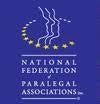Investigation begins on Day One
In personal injury litigation, particularly when representing the injured party, paralegals routinely perform a variety of investigative tasks. An early, thorough investigation can lay the ground work for a solid case. While hiring a professional investigator may often be necessary, paralegals can perform a significant portion of the essential investigative work, sometimes without leaving the office.
The investigation begins as soon as the law firm is contacted by the potential client – sometimes even before it is retained. If the call involves a motor vehicle accident, check the local papers or television stations for reports concerning the accident; this is where the internet is an invaluable tool. This early information may be useful to the attorney when deciding whether to take the case or when speaking with the client for the first time. Or if the potential case involves a product defect or surgical complication, a quick internet search can help determine if there was a product recall or if the surgical complication is a recognized risk.
Once the client has retained the firm, the investigation begins in earnest. The paralegal/investigator must gather as much data about as many people and events as possible. It is important to locate and take statements from potential witnesses; photograph and document the accident scene; locate, collect and preserve physical evidence; and photograph the client’s injuries. In addition to obtaining all medical records concerning the instant injury, it may also be necessary to obtain prior medical records in order to fully understand the client’s injuries and disabilities.
Gathering and reviewing records is an integral part of any investigation and one which paralegals are well suited to perform. Get all of the records as soon as the file is opened: police records, paramedic reports, fire rescue reports, weather records, etc. In this phase of the investigation, the internet has become an invaluable tool for gathering information about locations, people, products, drugs, medical procedures, etc. – much of it free. Maps and aerial photographs can shed light on accident locations. More and more public records, such as property (ownership) records, are available on the internet. Photographs of exemplar products or instrumentalities involved in an accident which are useful in understanding the mechanics of the accident/incident can be found on the internet. Social media sites offer another source for locating witnesses. And, to the delight of many employers, all of this investigative research can be done without the paralegal leaving the office!
However, a thorough investigation does require work away from the office. Visit the accident site and take photographs and measurements. Try to go there at the same time of day as the accident and observe the traffic (vehicular or pedestrian) conditions. Never assume that the accident site is the same as the accident scene; accident sites change. There may be changes to the lights, contour of the road, street signs, timing sequence of traffic lights, etc. If possible, it may be helpful to visit the accident scene with the client.
Interviews are Key Component
It is essential to speak with fact witnesses as early as possible. The paramedics, firefighters, police officers on the scene and the ER nurses, doctors and other personnel are witnesses who are often overlooked. There may have been people who actually saw the incident such as a bystander or the injured individual may have been with someone. It is imperative that each of these witnesses be interviewed and that any records that relate to any of these people be carefully reviewed, including emergency room records and run sheets from the ambulance. Some of the most valuable witnesses are the emergency medical personnel who are summoned to the scene or render care and treatment to the injured party in the hospital ER. The paramedic may provide key testimony regarding “conscious pain and suffering”.
Occasionally, the police take photographs, but the photographs may not be referred to in their report. Often the police talk to witnesses whose names and addresses are not in their official report. More often than not, there are witnesses with whom the police never talk because they do not have sufficient time to do so. If the case is significant, some effort should be made to “canvass the neighborhood” of the accident scene to discover if there were any eyewitnesses in the surrounding area who were not identified in the police report. Obviously, time is of the essence in conducting these types of inquiries to be sure to locate witnesses while their recollection is still fresh. This avenue of investigation is better left to the professional investigator or seasoned paralegal with a strong investigative background but the paralegal can assist by identifying potential witnesses to interview and then by reviewing witnesses statements.
When interviewing a witness, it is important to stay focused and listen carefully to what they are saying as they may provide new information. Follow-up on that new information and question the witness further. For example, the witness may mention noticing a delivery truck at the scene. Find out where the truck was parked and what delivery company it was and then follow-up later with that company to possibly get the driver’s name to contact them as an additional witness. Be ever vigilant for any bit of information which may be useful for the client’s case.
When interviewing the client, ask them to describe their lifestyle before the accident and identify the kinds of activities they enjoyed prior to the accident that they can no longer perform. Prepare a standard list of activities to review with the client or provide a written list that the client can check off or fill out. During the course of the investigation, it is also helpful to meet with witnesses who knew the client “before and after” the accident/incident. These may include the client’s employer, co-workers, church pastor, family members, etc. Important points to cover with these witnesses include: client’s work habits, recreational hobbies and activities; sports activities; emotions, attitude and intellect; relationships with other people; personal habits, appearance and physical condition. Speaking with family members can provide a valuable perspective as they have most closely observed the injured person leading up to the injury and thereafter.
Many times, it is the private investigator hired by the law firm who talks with witnesses. But it is beneficial in the overall preparation of the lawsuit for the paralegal to make contact with and work with key witnesses early in the case. To most effectively assist in the preparation of the case for trial or settlement, the paralegal should know the testimony of every witness and the possible variations of testimony that may occur at trial. Keep in mind that witnesses who are initially favorable may not remain favorable. After claims adjusters and other investigators have the opportunity to confront a witness, the witness may give an inconsistent statement. It is far better to have the first sworn statement than to have the last version provided the night before the witness testifies at trial.
Investigation is an important component of personal injury litigation. Given the opportunity, many facets of that investigation, from initial intake up to trial, can be effectively and efficiently performed by paralegals.




 i
i


